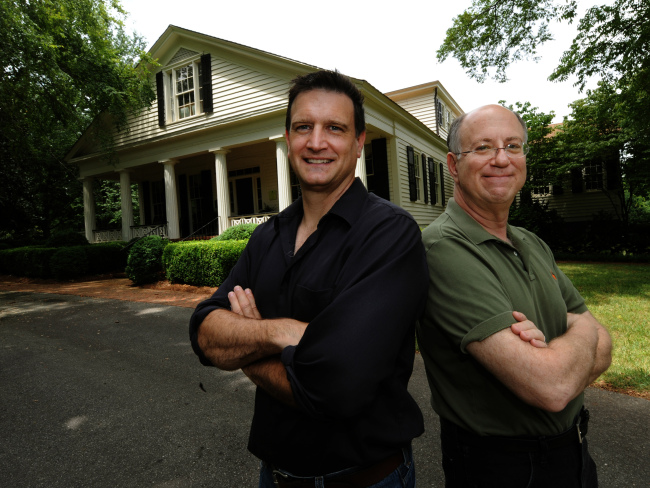Not every home in Douglas Frey’s book, “Marietta, the Gem City of Georgia,” is a splendor of architecture that immediately stirs images of its period the way antebellum evokes the Civil War and Victorian conjures street cars and suffragettes.
Some homes are just working stiffs. And that’s the way it should be, said Frey, 46, who became an accidental historian and author after he and wife Rachel Bowen bought a rundown, 111-year-old Queen Anne on Trammell Street in Marietta in 1998 and he started researching the history of the building and its inhabitants.
He was like an archaeologist who had unearthed a single artifact and out of that piece over the next nine years, he reconstructed the world that existed around it.
Some homes are just working stiffs. And that’s the way it should be, said Frey, 46, who became an accidental historian and author after he and wife Rachel Bowen bought a rundown, 111-year-old Queen Anne on Trammell Street in Marietta in 1998 and he started researching the history of the building and its inhabitants.
He was like an archaeologist who had unearthed a single artifact and out of that piece over the next nine years, he reconstructed the world that existed around it.

His 432-page, 6 1/2-pound book, published in 2011 and partially funded by the Cobb Landmarks & Historical Society, tells the story of Marietta through 50 homes built between 1838 and 1949. He starts with the city’s oldest home, Oakton, on Kennesaw Avenue, and ends with the Palladian-like Stoneridge home on South Woodland Drive, built in 1949. He includes his own home, the Trammell House, built in 1887.
The Victory Homes Cottage is one history has easily overlooked. It was built in 1943 as housing for workers at the nearby Bell Aircraft Corp. bomber plant. Frey spins a story around a single photograph of the home, describing the war effort to build nearly 700 B-29 bombers and some 100 homes, constructed with local assistance in the 70-acre Victory Heights subdivision. Rent was as low as $39.75 a month.
These days, even longtime residents of Marietta don’t recognize the Victory Homes, their place in the city’s history and a fleeting presence in the face of development. “I put that house in there because 50 years from now, they’ll all be gone,” Frey said.
Two weeks ago, Frey’s book was named one of three finalists for the Benjamin Franklin Award by the Independent Book Publishers Association. He was a nominee for Georgia author of the year at the Georgia Author of the Year Awards banquet and ceremony at Kennesaw State University. The Marietta/Cobb Museum of Art is also hosting an exhibit, “Homes & Heroes of the Civil War,” of black and white versions of the photos from the book. Even without Frey’s deft weaving of the history of the homes with the city, much of it glorious (the Trammell House was built by Col. Leander Newton Trammell, a prominent lawyer and Georgia state senator), some of it not so glorious (an owner of one of the homes provided a getaway car for the 1915 lynching of Leo Frank), the book is a feat of photography.
Frey’s partner in the project, photographer Jim DiVitale, shot the interiors and exteriors of the homes in available light because of time constraints. He would shoot 15 exposures from the same angle at 15 different light setting. He then used a computer program to blend them into a single photo that renders details it would not otherwise.
Frey is noodling another such book for another city. He’s still struck by what a house has to say. “It opens up doors on history,” he said.
By Jeffry Scott
(The Atlanta Journal-Constitution)
(MCT Information Services)





![[Weekender] Pet food makers bet big on ‘recession-free’ pet food market](http://res.heraldm.com/phpwas/restmb_idxmake.php?idx=644&simg=/content/image/2024/05/10/20240510050754_0.jpg&u=20240512145510)




![[Drama Tour] Romantic trip to ‘Queen of Tears’ filming spots](http://res.heraldm.com/phpwas/restmb_idxmake.php?idx=644&simg=/content/image/2024/05/09/20240509050798_0.jpg&u=20240511190213)







